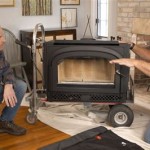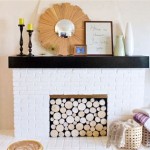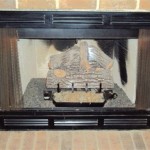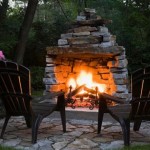Fireplace Blower Kits: Enhancing Heating Efficiency and Home Comfort
Fireplace blower kits represent a practical solution for homeowners seeking to improve the heating efficiency of their traditional wood-burning or gas fireplaces. These kits, designed to be installed within the fireplace firebox or lower cavity, function by circulating heated air more effectively throughout a room, rather than allowing a significant portion of the heat to escape up the chimney. This article explores the functionality, benefits, selection criteria, installation procedures, and maintenance considerations associated with fireplace blower kits.
The primary function of a fireplace blower kit is to extract heated air from the fireplace and distribute it into the surrounding living space. A standard fireplace, without a blower, relies primarily on radiant heat, which warms objects directly in front of the fire. However, a large percentage of the heat generated is lost through the chimney draft. A blower kit combats this inefficiency by drawing cool air from the room, passing it over the heated firebox, and then forcing the warmed air back into the room via vents or louvers. This forced convection process significantly increases the amount of usable heat derived from the fireplace.
Improved Heating Efficiency and Cost Savings
The most prominent benefit of a fireplace blower kit is its ability to enhance heating efficiency. By actively circulating warm air, a blower can distribute heat more evenly and rapidly throughout a room, reducing reliance on a central heating system. This can lead to noticeable cost savings on energy bills, particularly during colder months when the fireplace is used frequently. Without a blower, a fireplace may primarily heat the immediate vicinity, requiring the central heating system to work harder to maintain a consistent temperature throughout the home. A blower helps to create a more comfortable and uniformly heated environment, improving overall energy efficiency.
The efficiency gains often depend on several factors, including the size of the room, the insulation of the home, and the type of fireplace. However, in general, homeowners can expect to see a significant improvement in heat distribution and a reduction in the strain on their central heating system. The blower kit essentially transforms the fireplace from a primarily decorative feature to a more functional and efficient heating appliance. The initial investment in a blower kit can be offset by the long-term savings on heating costs and the increased comfort level it provides.
Furthermore, using a fireplace with a blower kit can contribute to a more sustainable heating approach. By decreasing the reliance on fossil fuel-based central heating systems, homeowners can reduce their carbon footprint and contribute to a more environmentally friendly energy consumption pattern. The efficiency gains translate not only into cost savings but also into a more responsible approach to heating and energy management.
Selecting the Right Fireplace Blower Kit
Choosing the appropriate fireplace blower kit requires careful consideration of several factors to ensure compatibility and optimal performance. The first and most crucial step is to determine the precise make and model of the existing fireplace. Blower kits are typically designed to fit specific fireplace models, necessitating an exact match to ensure proper installation and functionality. Consult the fireplace manufacturer's documentation or contact a fireplace specialist for assistance in identifying the correct model number.
Once the fireplace model is identified, consider the blower kit's specifications, including its CFM (cubic feet per minute) rating, which indicates the volume of air the blower can move. A higher CFM rating generally corresponds to a greater ability to circulate air effectively, which is particularly important for larger rooms. However, selecting a blower with an excessively high CFM rating for a smaller fireplace can result in noisy operation and potentially inefficient heat distribution. It is important to choose a blower with a CFM rating that is appropriate for the size of the fireplace and the area to be heated.
The next factor to consider is the noise level of the blower. Some blower kits are designed for quiet operation, while others may produce a noticeable hum. Consider the sensitivity to noise and the intended use of the room when making this decision. Look for blower kits that are described as "quiet" or that have a documented decibel (dB) rating. Online reviews and product specifications can provide further insights into the noise levels of different blower models.
Finally, consider the installation requirements and ease of use. Some blower kits are designed for DIY (do-it-yourself) installation, while others may require professional installation. Assess technical skills and comfort level with electrical wiring and fireplace mechanics before committing to a DIY installation. Ensure the kit includes all necessary components and clear, comprehensive instructions. Features such as variable speed control and automatic temperature sensors can also enhance the user experience and provide greater control over heat output.
Installation and Maintenance Procedures
The installation process for a fireplace blower kit varies depending on the specific model and the type of fireplace. However, there are some general guidelines that apply to most installations. Before beginning the installation, ensure that the fireplace is completely cool and that the gas supply (if applicable) is turned off. Disconnect the power supply to the fireplace to prevent electrical shock. Carefully read and understand the manufacturer's instructions before proceeding. Most kits will involve some degree of disassembly in the lower cavity to install the blower assembly.
The first step typically involves removing any existing components, such as ash pans or decorative panels, to access the blower compartment. The blower unit is then positioned within the designated space, ensuring that it is properly aligned with the air intake and output vents. Secure the blower unit using the provided mounting hardware, such as screws or brackets. Connect the blower's power cord to the fireplace's electrical system, following the manufacturer's instructions carefully. This may involve splicing wires or connecting to a terminal block. If unsure about any aspect of the electrical connections, consult with a qualified electrician.
Once the blower is installed and wired, reassemble any removed components and test the blower's operation. Start by turning the blower on its lowest setting to ensure that it is functioning properly and that air is flowing through the vents. Gradually increase the blower speed to determine the optimal setting for the desired level of heat output. Monitor the blower for any unusual noises or vibrations, and address any issues promptly. After installation, it is good practice to monitor the unit for the first few hours of operation.
Regular maintenance is essential to ensure the long-term performance and reliability of the blower kit. Periodically inspect the blower for dust and debris accumulation, which can reduce its efficiency and potentially cause it to overheat. Clean the blower unit using a vacuum cleaner or compressed air to remove any accumulated dust. Check the blower's electrical connections and wiring for any signs of damage or wear. If any issues are detected, repair or replace the affected components promptly. These maintenance steps ensure efficient airflow and reduce fire risk.
Following these guidelines for selection, installation, and maintenance can help homeowners realize the full potential of their fireplace blower kits, improving heating efficiency, reducing energy costs, and enhancing overall home comfort. Understanding the functionality and benefits of these kits empowers informed decisions and optimal use of heating resources.

Fireplace Blower Fan Kit For Heat Glo N Heatilator Gfk 160a 160

Fireplaceblowers Fireplace Blower Accesories Tools

Ac Infinity Airblaze S10 Universal Fireplace Blower Fan Kit 10 With Sd Controller Compatible Lennox Hearth Glo Majestic Rotom Fireplaces For Home Living Room Heat Circulation Com

Gfk160 Gfk160a Fireplace Blower Fan Kit For Heatnglo Heat And Glow Heatglo He

Superior Fbk 100 Standard Single Sd Blower Kit For Gas Fireplaces

Gfk 160a Temperature Controlled 180 Cfm Fireplace Blower Fan Kit With Sd Control Knob

Majestic Gfk 160a Fireplace Blower Fan Kit 160 Cfm Rheostat Temperature Sensor

Heatilator Fireplace Blower Kit Gfk160

Heatilator Fireplace Blower Fan Kit Gfk4b Hearth Trends

Hht Blower Assembly Kit Mfk 160 Gz550 Gfk 160a
Related Posts








